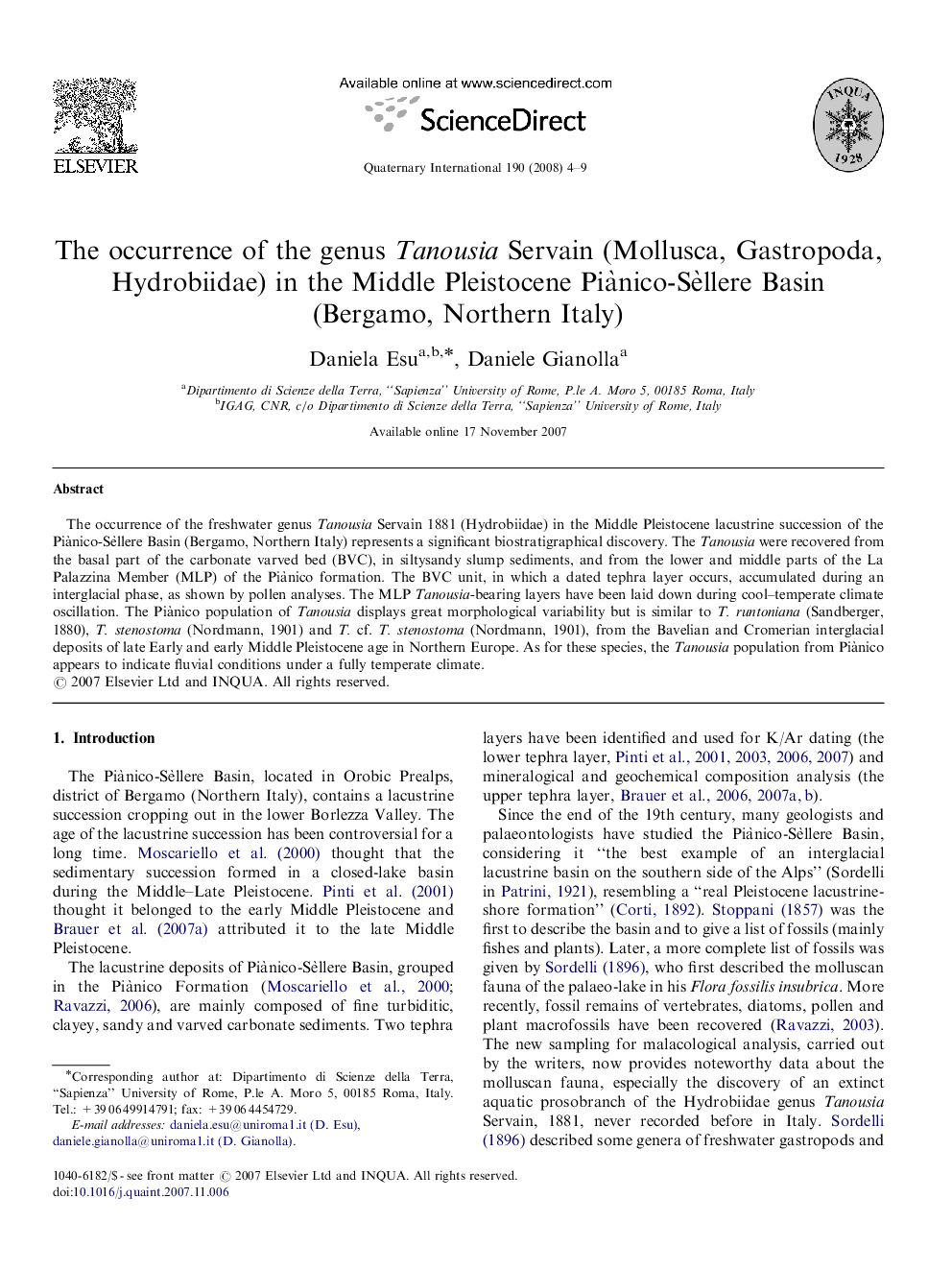| Article ID | Journal | Published Year | Pages | File Type |
|---|---|---|---|---|
| 1044164 | Quaternary International | 2008 | 6 Pages |
Abstract
The occurrence of the freshwater genus Tanousia Servain 1881 (Hydrobiidae) in the Middle Pleistocene lacustrine succession of the Pià nico-Sèllere Basin (Bergamo, Northern Italy) represents a significant biostratigraphical discovery. The Tanousia were recovered from the basal part of the carbonate varved bed (BVC), in siltysandy slump sediments, and from the lower and middle parts of the La Palazzina Member (MLP) of the Pià nico formation. The BVC unit, in which a dated tephra layer occurs, accumulated during an interglacial phase, as shown by pollen analyses. The MLP Tanousia-bearing layers have been laid down during cool-temperate climate oscillation. The Pià nico population of Tanousia displays great morphological variability but is similar to T. runtoniana (Sandberger, 1880), T. stenostoma (Nordmann, 1901) and T. cf. T. stenostoma (Nordmann, 1901), from the Bavelian and Cromerian interglacial deposits of late Early and early Middle Pleistocene age in Northern Europe. As for these species, the Tanousia population from Pià nico appears to indicate fluvial conditions under a fully temperate climate.
Related Topics
Physical Sciences and Engineering
Earth and Planetary Sciences
Geology
Authors
Daniela Esu, Daniele Gianolla,
